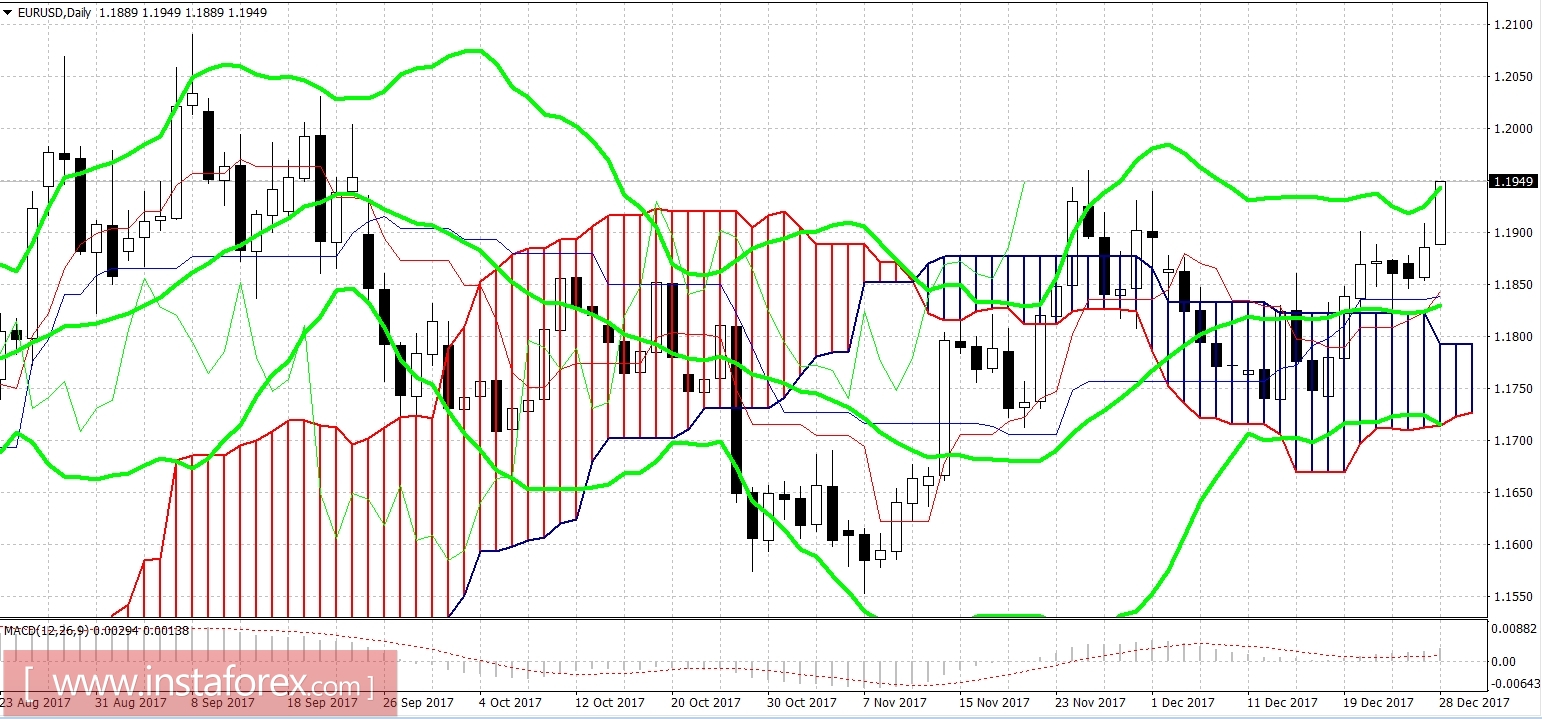The US currency, paired with the euro this year, lost almost half a thousand points. The dollar lost its positions almost every month, despite the Fed's tightening of the monetary policy, the growth of key indicators and the approval of the tax reform. The last days of the outgoing year vividly confirm the main trend of this year. The EURUSD pair suddenly jumped to the middle of the 19th figure against the background of another weakening of the US currency. What are the "claims" of traders to the dollar? In my opinion, there are several reasons for this behavior.
First of all, there is uncertainty. The dollar ends the year in conditions of great uncertainty on many key issues. For example, exactly a year ago the Fed hiked the rate and announced three increases during 2017. The outlined plan came to life, although many regulators expressed cautious stance on this issue.
However, representatives of the "old guard" of the Fed (Janet Yellen, Stanley Fisher, William Dudley) firmly defended the course and persuaded their colleagues that such actions were appropriate. At the moment, the composition of the Board of Governors has been reformatted: Fischer has already retired, and Dudley and Yellen will do so in early 2018. Thus, the "hawks" will lose their particular lobby, since the listed members of the regulator had a significant influence in the Committee. Certainly, more ardent supporters of monetary tightening can come in their place, but that is not excluded, as well as the reverse option.
The future head of the Fed, Jerome Powell, is also a "dark horse", despite the general assumption that he is predictable. He is rightfully considered to be an ally of Yellen in politics, but that does not mean that he will blindly copy her actions. After Powell became the most likely candidate, he publicly stopped commenting on the prospects for monetary policy in the context of the current economic situation. However, indirect comments lead to certain thoughts. For example, in the Senate (when considering his candidacy), he said that he did not see signs of "overheating" the country's economy. But this argument is what the supporters of the rate hike use, especially against the background of a decrease in the level of unemployment.
Powell also repeatedly emphasized his focus on weak inflation, advocating a smooth process of a tightening in monetary policy. In general, cautious, dimensionality and vigilance are key features of his character, so do not expect impulsive decisions or actions from him. Especially since the situation with inflation did not level off in 2017.
The growth rate of the average wage, as well as the costs of personal consumption, remain at low levels. Therefore, the consumer price index at the beginning of next year will also show weakness. Certainly, Powell can act "contrary" - based on other sectors of the economy, in order to continue the course on the normalization of monetary policy. This policy was followed by Janet Yellen, who in autumn of this year assured that low inflation would not prevent the regulator from taking appropriate decisions.
However, there is also an alternative: the new head of the Fed can listen to the representatives of the "dovish" camp. The most active of them (Neel Kashkari, Lael Brainard, Charles Evans) are calling for a pause in the process of tightening monetary policy, so as not to harm the country's economy. In their view, weak inflation is alarming, and is most importantly symbolic, not a temporary signal, indicating a large-scale decline in demand. In particular, Charles Evans in the autumn urged not to raise the rate in December, taking a wait-and-see position until mid-2018. Will the data "threaten" Jerome Powell - an open question, the answer to which we will learn in the first period of next year.
Another factor of uncertainty is the tax reform, or rather, its effect. Traders were optimistic about the adoption of this law, but in the end they accepted it with indifference. The market doubts that the new tax rules will trigger an impetuous growth of key macroeconomic indicators. Moreover, the reform has an adverse impact in the form of side effects (public debt growth, budget deficit, etc.). It is still worth considering the fact that the original "revolutionary" option lost some of the proposed norms in the discussion, and that the final draft appears less radical and attractive in the context of the foreign exchange market. The economic blitzkrieg declared by Trump fell apart, and the dollar lost powerful support.
All this suggests that in the near future, the US currency will not be in demand. Nevertheless, on the eve of the New Year, I would not recommend opening any trading positions for dollar pairs: the "thin" market is too unpredictable.






















